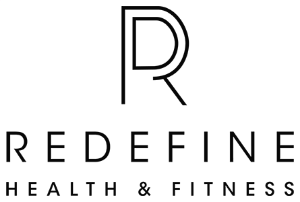Learning to Slow my Practice Down to Achieve More Progress
I began my yoga practice when I was 25. I’ve always been a cardio addict, preferring to do cardio over any strength or flexibility training (thus I was resistant to the idea of spending a whole hour in a yoga class). At that time in my life, I was in my orthopedic residency, so I was short on time juggling a full time job, the outside residency requirements, and my marathon training. If I had any extra time in the week, I wanted to dedicate the time to a few extra miles.
We moved midway through my residency, heading down to the walking district in Cardiff. We were lucky to have friends just a few doors down from our new place. Our friends were going to yoga every night, and often invited us along. After a few declines, I decided to view the time spent in yoga as time with friends vs time I was missing running, and I decided to head to class with them. I had taken a few classes in college and had not enjoyed it, but at Green Flash Yoga in Cardiff there were wonderful teachers and an amazing community, making me enjoy yoga this second time around.
I am definitely stronger vs flexible in my athletic capabilities. Not wanting to look like a beginner, early on in my practice I would muscle my way into any posture variation that the teacher offered. I never wanted to choose the more modified option or use blocks, thinking that this was a clear giveaway that I was new or not as capable as the other more seasoned practitioners. I was also raised to follow instruction from teachers and coaches, so even if a pose didn’t feel right for my body, I would do it.
In addition to not modifying poses, during the first few years of my practice I only took vinyasa and power style yoga classes, figuring if I was going to take the time to go to class, that I should also get a strength workout out of the time spent. I remember missing a class because work ran late and I took the slower flow class, and hating it, deeming it too easy and not a good use of my time. I learned a few years later how wrong I was!
When I left my clinical practice and went out on my own, my schedule all of a sudden became more conducive to taking classes. I used to be in an office 8-6 every day. Now, I had clients scattered during the day and could take 830am boot camps and noon Lagree classes. With the new found freedom in my schedule, I no longer felt so pressured to make my yoga practice my sole strength routine, and began attending evening slow flow classes, which began to completely change my yoga practice.
I learned a lot about my body and movement patterns from these classes, and realized how good it felt to slow down and really focus on my mobility restrictions. Instead of feeling upset after a less intense class, I was finding benefit into each individual movement, focusing on drawing more mobility into my restricted regions and doing something therapeutic for my body, vs forcing myself into postures that in reality I was not ready for. This realization has made me more comfortable modifying postures in classes, skipping postures that don’t feel good in my body, and being comfortable staying present in the four corners of my own mat and worrying more about my practice vs what other practitioners may think. I also now use props in most of my postures.
I encourage everyone to slow down in each posture and think about:
• What is the purpose of this posture?
• What am I supposed to be stretching or strengthening?
• Am I being honest with myself about my capabilities in this posture or am I pushing through some of my mobility restrictions and compensating to make the pose “look more advanced?”
Since slowing down my practice, I have noticed more progress in my mobility, and I have not lost any strength in my more powerful postures (arm balancing.) I don’t miss feeling like I am struggling in any of my postures or creating any pain or potential for injury. Slowing down and focusing on correct movement patterns has changed the way my practice looks and feels for the better.
Has anyone else had any similar experiences or shifts in their practice? Feel free to share!

